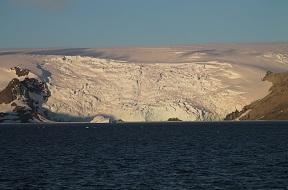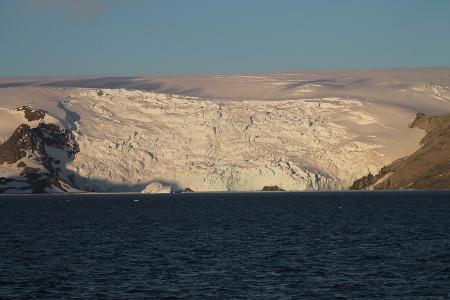Developed by the University of Oviedo and the University of Barcelona, the work delves into the past and present of Antarctica and the influence that global warming is having on it
A publication co-directed by the University of Oviedo and the University of Barcelona has brought together leading, in-depth research done by 40 international specialists on Antarctica, addressing both its past and present state and the influence that global environmental change - not just climate change - is having on it. "Past Antarctica. Paleoclimatology and Climate Change", published by scientific publishing house Elsevier, was directed by Jesús Ruiz, professor in the University of Oviedo's geography department, and Marc Oliva, researcher in the University of Barcelona's geography department.
Scientists who have collaborated on the project offer the most complete reconstruction of Antarctica's paleoclimate and environment and current environmental trends. They also study Antarctica in connection with the rest of the planet - because, despite playing a specific climate-related role, this great dome of cold air does not evolve unilaterally, but is inevitably connected with all the atmospheric dynamics of the southern hemisphere's mid-latitudes, and has a direct relationship between them.
At planet level, there are many relationships between Antarctica's climate and the dynamics of global change, and one of the clearest of these is seen in glaciers, which are generally reducing in size due to recent warming - something that affects sea levels. However, within this long-range warming trend, there may be certain decades or areas of Antarctica where, conversely, cooling occurs. This phenomenon occurs precisely because of the aforementioned climatic connection between Antarctica and the rest of the globe. For example, the "El Niño" phenomenon - a radical climate anomaly that takes place in the central-eastern Pacific, with warmer and generally drier years during which events such as torrential rains frequently intensify - is reflected in variations in Antarctica's climate, as shown from climate records from Antarctic Peninsula stations since instrumental records have existed.
An example of when this happened was 1997-98 and, despite the fact that "El Niño" originates in the eastern Pacific, from that year onwards the warming trend of the Antarctic Peninsula that had been recorded in previous decades was broken, and from then on produced a cooling that lasted until 2016. This was reflected, for example, in the stabilising or slight advancing of the glaciers in this area. "There is no doubt that these kinds of interconnections between Antarctica's climate and global climate occur. And for this reason it is vitally important to continue research that enables us to understand this phenomenon and its consequences better", says Professor Jesús Ruiz.
"Past Antarctica" also looks at volcanic activity, Antarctic soils, recent climatic trends, relict and present fauna and flora, human colonisation and geopolitics as well as contemporary Antarctic research, providing resources for understanding Antarctica and its history and promoting further research into conservation efforts.




